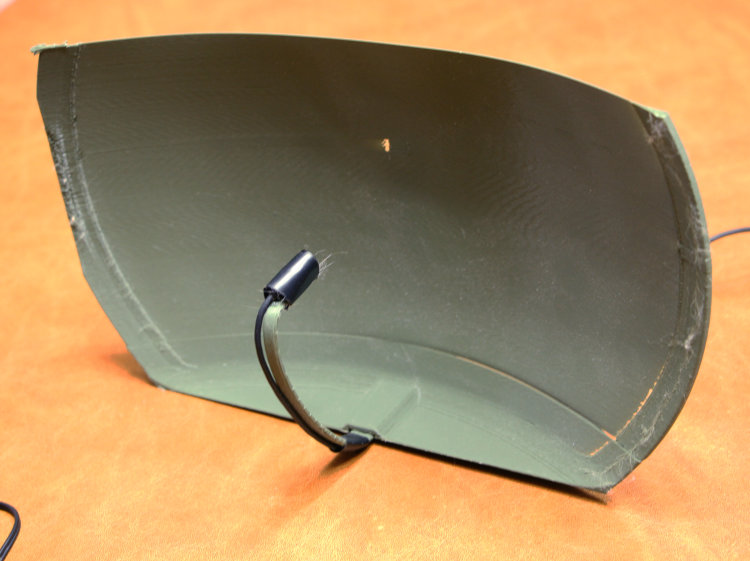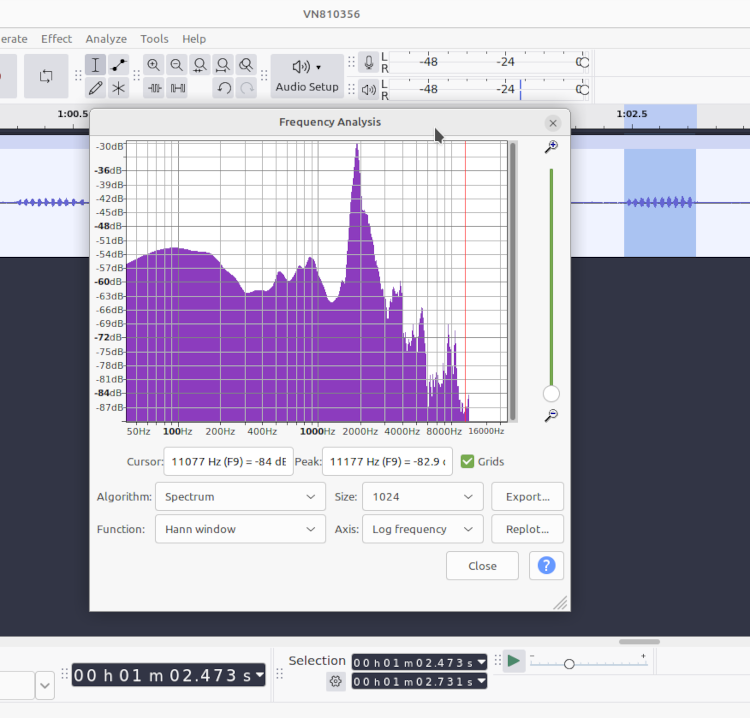A rather lackluster find this week, but also the beginnings of a project that might provide for more interesting stuff later on. Otherwise, you’ve seen the recent worthwhile pics, or will in a post soon to follow – they’re all the same subjects I’ve been finding recently anyway.
With the rains came a lot more noisemakers outside, different ones at different hours of the day, and at opportune times I deiced to further test out a bit of experimental apparatus, seen below:

Nature videography and audio work often requires the ability to isolate and amplify ambient sounds such as animal calls, and there are primarily two different ways to do so: a unidirectional ‘shotgun’ microphone, and a parabolic microphone. This is the latter, only a 3D printed version designed by ‘Gage6917,’ except his didn’t have the printing issues that I had and looks a hell of a lot better.
Shotgun mics have interference slots along the sides of a long tube that cancel out most sounds from the sides, allowing only the sound straight out the end of the tube to dominate, and I’ve been using one of these for a while now with great results. A parabolic mic, on the other hand, focuses sound with a reflector that gathers more of the sound waves that would normally pass by the mic opening, bouncing them to a specific point which is where the mic should be. In my case, we have the digital recorder at bottom and the monitoring headphones to the left, a powered lapel mic to the right, feeding to the actual microphone mounted on the olive green thing in center, specifically that little arm in front of the dish.

A parabola is a curved surface with a focus point, so that waves (sound/light/etc) that are approaching straight from the front will be reflected to this focus point, while others from off angles will not. Conversely, anything emanating from that focus point will be reflected straight forward; this is the principal behind flashlight reflectors, radar dishes, and telescopes. I don’t really know how to model a parabola in any program, so luckily Gage6917 does and uploaded his design, because purchasing a parabolic dish of any size is damned expensive. Now, decent ones tend to be large, because the longer wavelengths/lower pitches won’t get picked up as well by a smaller dish, but of course a large dish is unwieldy and not very useful in the field, and especially not atop a camera, but this is a nice compromise. Different materials may deaden or alter sounds as well, so most of them are acrylic and not cornstarch-based plastic like the PLA I used.
So how well does it work?, you ask, and I answer, A hell of a lot better than expected. This is me walking around with it at night, homing in on one particular noisemaker, and you can hear the sweeps I make back and forth to narrow down the exact direction as I move closer.
Parabolic mic directional and homing test
My steps can be heard, but this was also shot at night during a heavy mist, so some dripping from trees is in there too, as well as a little bit of handling noise though I was keeping this to a minimum. But there was no question when the parabolic mic was pointing right straight at the thing producing the noise, in this case a variety of cricket. I was hoping to get the spring peepers that have sounded off occasionally, but they weren’t cooperating while I was out there.
Another, this time during the day yesterday; The Girlfriend and I have been hearing these sounds routinely near the pond, usually narrowing it down to a rough area, but the sounds can play tricks on our ears and sometimes we’re shifting back and forth to try and determine just where it is. The parabolic mic, however, took the uncertainty out.
Parabolic mic directional and homing test, part 2
You can hear my comments within, and just as I was leaning over the exact spot, a green frog leapt from cover right there, making me believe that it was the one creating the noise. Then I was confused, because that’s not the noise green frogs make in the slightest – it was a mere coincidence. Moreover, none of the other frogs or toads in the area make this noise either, and I eventually narrowed it down to likely a northern mole cricket, or at least a member of the mole cricket family, which makes sense given the conditions and location plotted.
That linked page also indicates that the trills are actually 8 very rapid pulses at about 2 kHz in frequency, which means nothing unless you’re either quite adept at hearing pitches, or can use Audacity to determine frequency:

Okay, so that’s ten pulses, not eight, as you can see from the highlighted section to the right, while the frequency plots a distinct peak at 2000 Hz, or 2kHz. I’d say that’s a pretty damn close match. But notice how different it is from another species of mole cricket captured here.
I also went exploring behind the pond and along the edge of the creek that borders the property, hoping to hear something interesting. If you listen carefully to the file below, you’ll hear a faint ka-thunk in there.
Parabolic mic directional and homing test
That’s clearly a beaver diving – heard it too many times before. This one was behind me, however, directly opposite the mic direction, otherwise it should have been many times louder. I also heard something crashing away from me through the leaves, naturally while I was not recording, and by the time I’d started recording the sound had ceased. Curiously, this came from behind me at a spot that I’d passed only 30 seconds earlier, so we somehow crossed paths in a narrow isthmus between pond and creek. I suspected something had come out of the pond just behind me before discovering that I was there, though I only heard one brief splash and the duckweed was undisturbed in that area. Shame I wasn’t recording though.
The goal now is to make a few small modifications to the design, specifically adding a hotshoe mount so it can go atop the camera, but also a manner to tuck the wires in better and perhaps isolate the mic itself from the vibrations of handling the parabola or the camera it’s mounted upon. And a wind shield, but that’s easy enough to add. I really want to try this out on the wood duck video work.



















































